The Importance of Engineering Judgments for Perimeter Fire-Containment Systems
Learning Objectives:
- Identify the key design components that make a perimeter fire-containment system work.
- Explain why the design professional should seek an engineering judgment (EJ) for a perimeter fire-containment system and who should issue it.
- Describe the key components that comprise a high-quality EJ.
- Discuss how manufacturers can play a critical role in ensuring the perimeter fire-barrier system satisfies the requirements and specifications of the EJ.
- Review the codes and standards that are applicable to perimeter fire-containment systems.
Credits:
This course is approved as a Structured Course
This course can be self-reported to the AANB, as per their CE Guidelines
Approved for structured learning
Approved for Core Learning
This course can be self-reported to the NLAA
Course may qualify for Learning Hours with NWTAA
Course eligible for OAA Learning Hours
This course is approved as a core course
This course can be self-reported for Learning Units to the Architectural Institute of British Columbia
The curtain-wall system has been common for many years and continues to be specified today, especially in new commercial high-rise constructions. These nonstructural exterior building coverings typically consist of exterior cladding made from lightweight, durable materials such as aluminum framing with vision glass infills in a combination of glass, aluminum, stone, or metal cladding spandrels.

Photo: Jay Paul Co.
Perimeter fire-containment systems are vital to ensuring that curtain-wall systems, such as the one wrapping the exterior of 181 Fremont in San Francisco, are less vulnerable to vertical fire spread.
Curtain-wall systems enable distinctive and dynamic design aesthetics while protecting the building against the elements. But as curtain-wall systems are specified, it is imperative that they are designed and installed to mitigate the risk of fire. Curtain-wall systems present a specific feature that makes them prone to spreading fires. Their installation creates a void between the edge of the fire-rated floor slabs and the nonrated curtain wall. In the event of a fire, this unprotected space at the slab edge acts as a chimney for fire and gases, helping a fire rapidly spread from floor to floor.
The void between the fire-rated floor slabs and the nonrated curtain wall is often, unfortunately, only filled with mineral wool as a way of addressing the perimeter fire-containment system. This approach is wrong and will not satisfy the requirements of a perimeter fire-containment system. To make matters more challenging, the void space is hidden from view after construction, which presents additional problems. In any case, a building that does not have an appropriately designed and properly tested system is a serious fire risk.
A recent tragedy highlights the issue. In 2017, a fire broke out in the Grenfell Tower, a 24-story residential building in West London. The fire spread rapidly through the building exterior and expanded to all four sides within just 2 hours before consuming the entire structure. Seventy-two people died.
Efforts to improve the safety of buildings for occupants can be categorizes as active or passive. Active measures are those that suppress fires. Detective systems include smoke alarms and fire sprinkler systems. Passive measures are those that utilize fire-rated systems to compartmentalize a fire and keep it from spreading. These include perimeter fire-containment systems, also referred to as perimeter firestopping. Such systems use Intertek or Underwriters Laboratories (UL) approved mineral wool curtain wall and safing insulation to provide a barrier to flame and hot gases at the perimeter void between the curtain wall and the slab edge.
The International Building Code (IBC) defines firestopping as “an assemblage consisting of a fire-resistance-rated floor, floor/ceiling, or wall assembly, or the materials or devices…installed to resist the spread of fire through the assembly for a prescribed period of time.” Thus, perimeter fire-containment systems are designed to provide as much escape time as possible for building occupants in the event of a fire.
These insulation systems serve several important functions. By blocking openings with tested and rated fire-resistant materials, these systems can help contain the fire to a single floor or room, giving building occupants time to escape. They protect buildings by preventing fire, hot gases, and toxic smoke from traveling upward into other levels through the floor slab edge and exterior assembly, or curtain wall. Firestopping also protects a portion of the curtain wall referred to as the spandrel area, which typically consists of aluminum framing and spandrel glass, stone, or aluminum so that it can retain its structural integrity for as long as possible.
On the most basic level, the 2018 IBC requires that interior fires be controlled by installing a system that has been tested to ASTM E 2307 so that it remains securely in place for the time period equal to the fire-resistance rating of the floor assembly. The fire ratings of the firestop systems must match the fire ratings of the floor assembly. In other words, a perimeter fire-containment system must be designed and tested not only to verify that it functions properly but also to ensure that its F rating is the same as the floor it is protecting.
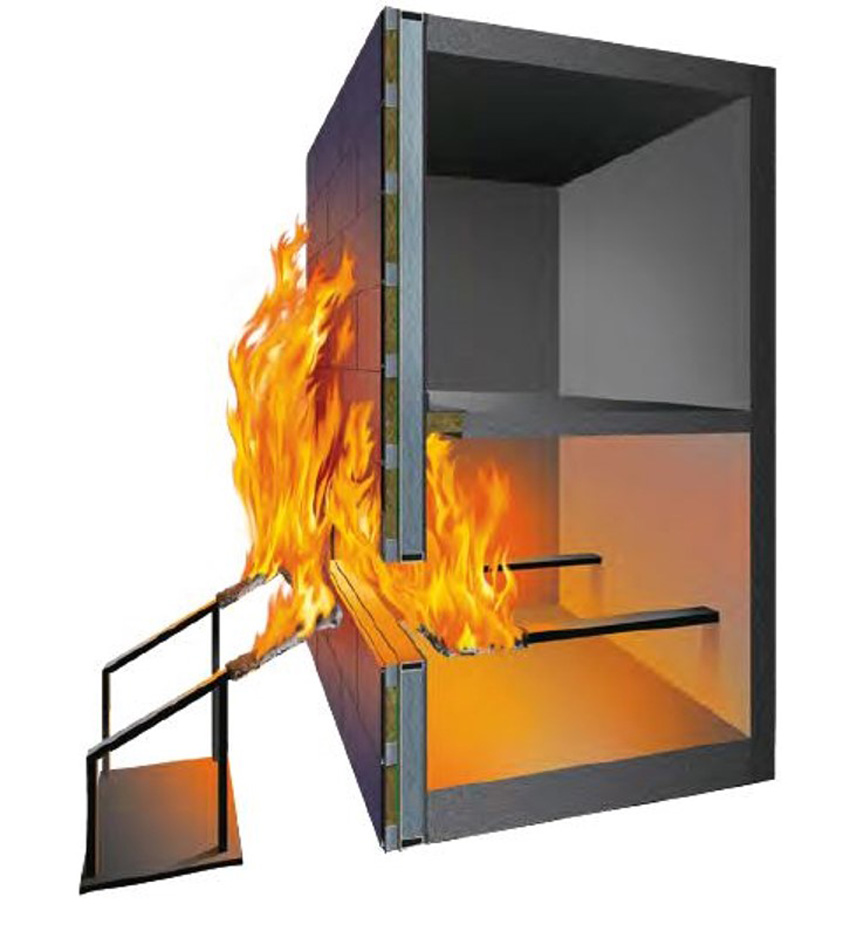
Image courtesy of Owens Corning
A perimeter fire-containment system must be designed and tested to not only verify that it functions properly but also ensure that its F rating is the same as the floor it is protecting.
Most curtain-wall assemblies are designed around a tested and listed third-party perimeter fire-containment system. Though these systems vary when it comes to exterior spandrel panels, heights, and locations relative to the floor, all of them share the six basic design components. These components, detailed below, are critical to achieving the published hourly rating.
- Use mineral wool insulation. Mineral wool insulation, at the required densities and thickness, is the only tested and proven material that will provide protection to both the curtain-wall spandrel and interior joint. Of the many insulation options available, mineral wool is best suited to the challenges of perimeter fire containment, primarily because its fibers are noncombustible and products made from rock and slag have extremely high melting temperatures (upward of 2,600 degrees Fahrenheit). It is also important to utilize the mineral wool insulation that has been tested and approved by Intertek or UL per ASTM E 2307. There are variations in the chemical makeup and density of mineral wool insulation products for various applications. There are mineral wool insulation products manufactured specifically for industrial applications. Some products are made for their acoustical or thermal properties. However, just because they are mineral wool insulation does not mean that they will necessarily provide the level of fire resistance that is required in the rigorous fire-exposure tests. Manufacturers develop proprietary formulations that have been tested and certified by the third-party laboratories evaluation and have the Intertek or UL classification mark that identifies that the material was approved for use in perimeter fire-containment systems.
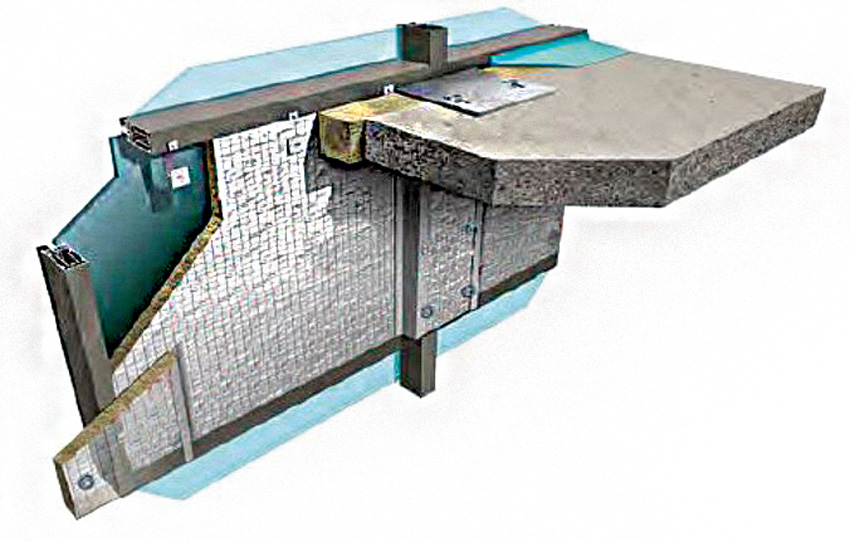
Image courtesy of Owens Corning
While perimeter fire-containment systems vary in the details, they all seek to create an effective seal in the joint between the unrated curtain wall and the fire-rated floor slab.
- Provide mechanical attachment of the mineral wool insulation. Mechanical attachment is required to keep the curtain-wall insulation securely in the place. If the curtain-wall insulation falls out of place, it will result in an early failure of the joint protection. A range of fasteners may be used to attach mineral wool insulation to the curtain wall. However, the fasteners must be installed per the Intertek or UL tested system referenced as the basis of design. These systems are listed in their respective fire-resistance directories and assure that the system functions as it was designed in the event of a fire.
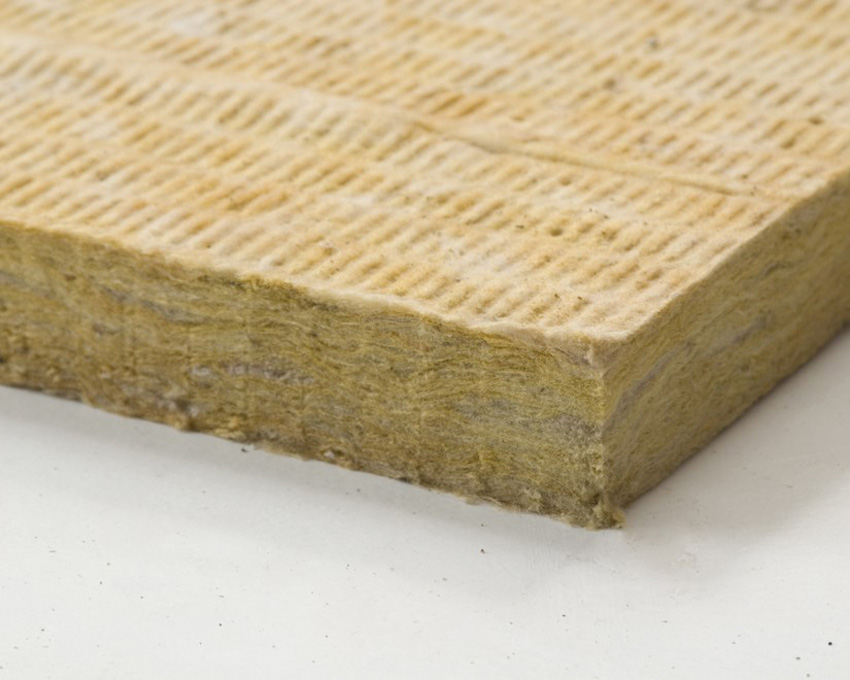
Image courtesy of Owens Corning
Mechanical fasteners: Mechanical attachment is required to keep the curtain-wall insulation securely in the place. If the curtain-wall insulation falls out of place, it will result in an early failure of the joint protection. A range of fasteners are available for attaching mineral wool insulation to the curtain wall. See specific UL or Intertek design for fastener requirements.
- Provide backer reinforcement at the safe-off line. All systems require some form of reinforcement of the mineral wool insulation at the safe-off line. This helps prevent the spandrel insulation from bowing due to the compression force at the safing joint. Most listed systems reference either a 20-gauge galvanized steel T-bar, L-angle, or hat channel, but other systems may use different components to reinforce the curtain-wall insulation. Some systems use the location of the window sill transom in combination with mechanical fasteners to provide support at the safing line.
The reinforcement also ensures a tight seal at the interior joint; if the joint is not sealed properly, the spandrel insulation will flex, creating gaps or seams where flames and gases may penetrate and potentially ignite combustibles on the floor above.
Another common misconception is that metal panels such as aluminum or steel-back pans will provide the necessary reinforcement. However, testing has proven these panels to be a failure point at the safing line if not properly reinforced, no matter what the material.
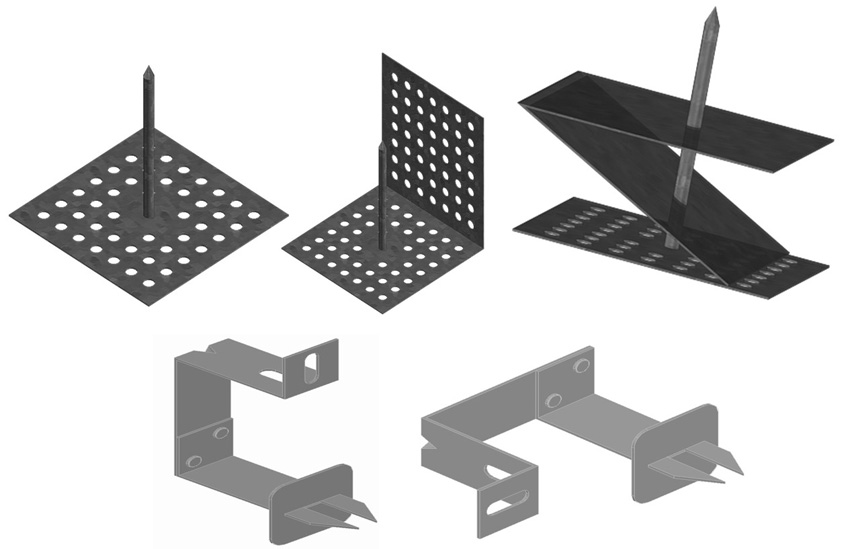
Photo courtesy of Owens Corning
Installing backer/reinforcement: All systems require some form of reinforcement for the mineral wool insulation at the safe-off line.
- Compression-fit mineral wool safing insulation must be installed within the void between the floor assembly and exterior curtain-wall insulation. The insulation must have the correct density and compression to create a proper seal at the interior joint. Again, the safing insulation must be tested per ASTM E 2307 and classified for use in perimeter fire-containment systems as listed in the fire-resistance directories.
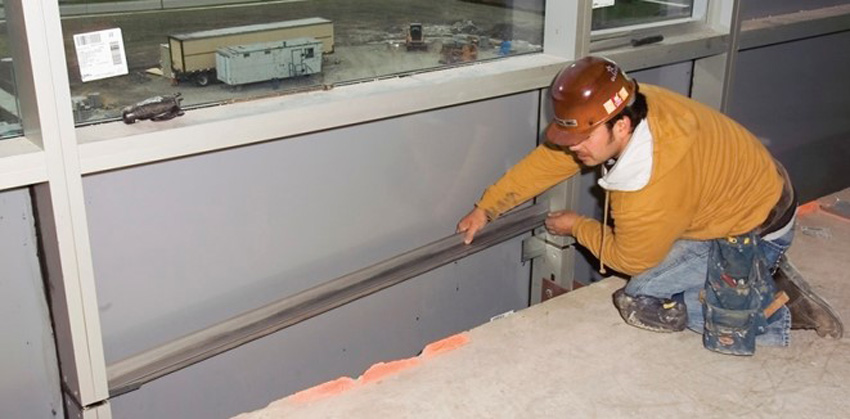
Photo courtesy of Owens Corning
Installing safing: The insulation must have the correct density and compression, as well as UL or Intertek approval, to create a proper seal at the interior joint.
- Exposed vertical aluminum framing must be protected with mineral wool insulation mullion covers. Because this detail is seen as contributing little to the performance of the assembly, this component is often removed from the system, especially if it obstructs aesthetic elements such as interior finishes or window shade pockets.
However, these covers play a critical role by protecting the mechanical fasteners that keep the spandrel insulation in place and helping keep the exterior wall in position so that the safing joint materials continue to block fire and smoke. If this component is eliminated, it results in a shorter fail rate of the exterior curtain wall—in other words, the curtain wall that supports the fire-barrier insulation system will block fire and smoke for less time than if the proper mullion cover protection were in place.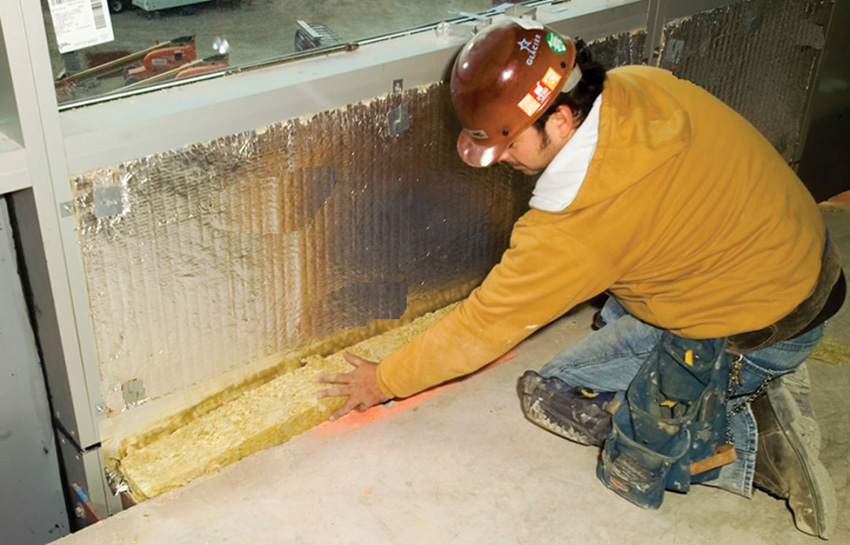
Image courtesy of Owens Corning
Mineral wool insulation is the best choice for providing protection in perimeter fire-containment systems, floor and wall penetrations, construction joints, and other firestopping applications.
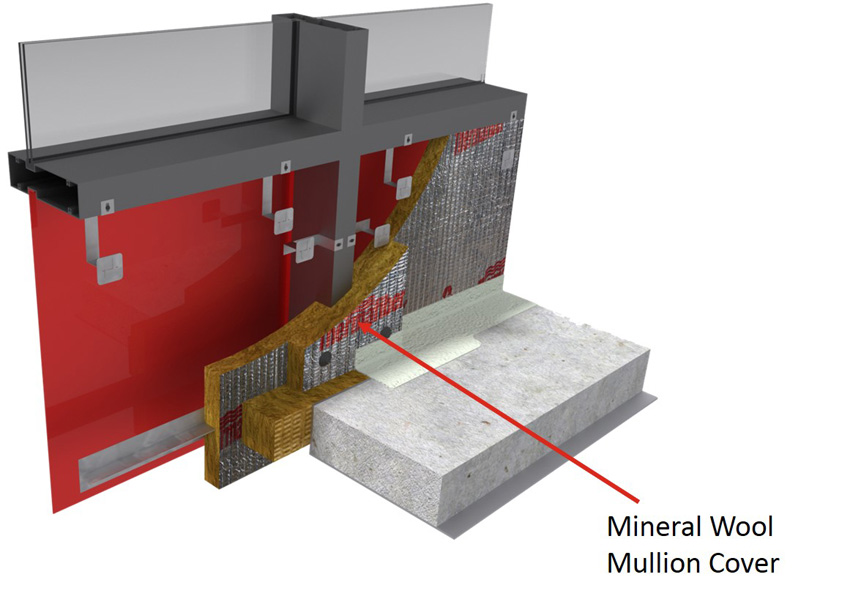
Image courtesy of Owens Corning
Mechanical wool mullion cover: These covers play a critical role by protecting the mechanical fasteners that keep the spandrel insulation in place and helping keep the exterior wall in position so that the safing joint materials continue to block fire and smoke.
- Smoke must be prevented from passing through the safe-off area. To prevent smoke from entering the safe-off area, systems include a smoke sealant applied on top of the safing insulation on the nonexposed side of the fire-containment system.
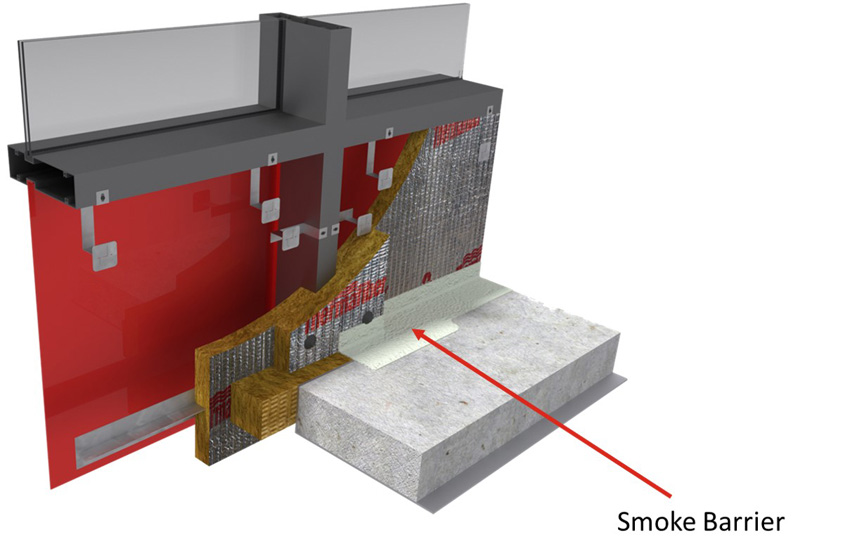
Image courtesy of Owens Corning
Smoke barrier: To prevent smoke from entering through the safe-off area, systems include a smoke sealant applied on top of the safing insulation on the nonexposed side of the fire-containment system.
In December 2004, faulty wiring sparked a fire on the 29th floor of the LaSalle Bank building in Chicago. The fire burned for 6 hours, but due to the presence of a perimeter fire-containment system, the fire was contained to the 29th and 30th floors.
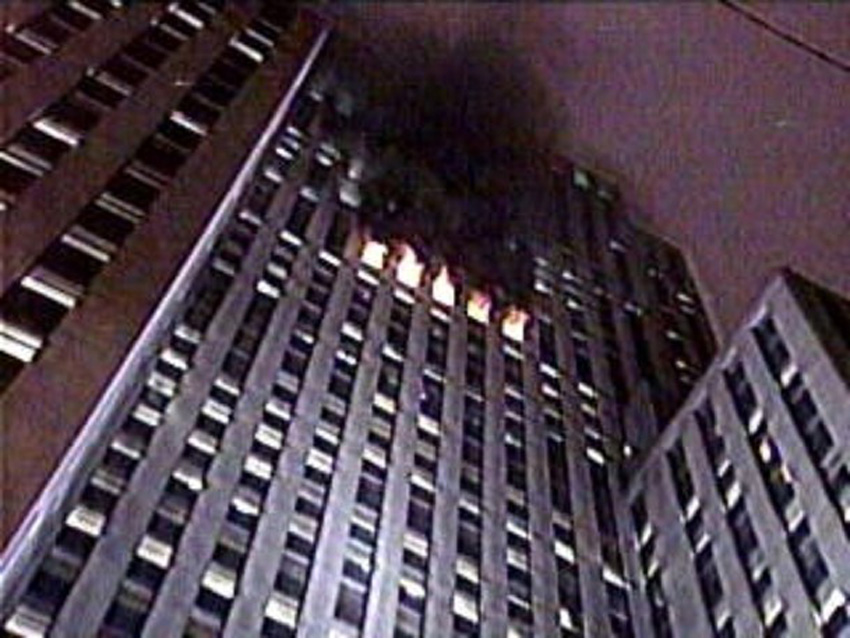
Photo courtesy of Owens Corning
The LaSalle Bank building in Chicago: The fire burned for 6 hours, but due to the presence of firestopping, the fire was contained to the 29th and 30th floors.















